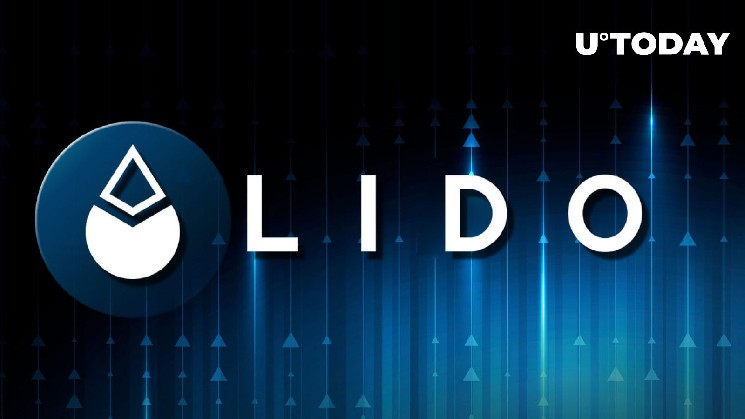Lido DAO: Here’s What Changes in Lido’s Staking with New Version

Lido DAO is rapidly gaining recognition as one of the most promising platforms in the decentralized finance (DeFi) space. Its popularity stems from its ability to enable investors to stake cryptocurrencies, including Ethereum (ETH), Solana (SOL), Kusama (KSM) and Polygon (MATIC), without the need for minimum deposits or complicated infrastructure.
In 2022, Lido stood out as a leader in ETH staking, thanks to its innovative approach to the challenge posed by the transition from proof of work (PoW) to proof of stake (PoS) consensus on the market’s leading altcoin. Many cryptocurrency users face a significant barrier in staking ETH, as the required investment of 32 ETH is beyond reach for many. Lido provides an accessible solution that democratizes staking for everyone.
The platform also incentivizes staking participation through daily rewards, maximizing the potential returns for stakers. Its token, LDO, is multichain, which allows for greater flexibility and increased access to different networks, such as lower fees and faster transactions.
In addition, Lido’s DAO plays a crucial role in the platform’s governance, helping to build liquid staking solutions and fostering a community-driven approach to project development. The DAO empowers users to have a direct impact on the future of the platform and provides a mechanism for collective decision-making. This makes Lido’s DAO a key factor in shaping the direction of the staking platform.
Lido V2
The recently proposed update to the Lido protocol is being hailed as the most transformative change to the platform yet and represents a significant step toward greater decentralization. This has been a long-standing challenge for Lido, and the new proposal seeks to address it head-on.
One of the key features of the update is the introduction of the staking router. With its new modular architecture, developers will be able to create gateways for new node operators, ranging from individual stakers to DAO clusters and Distributed Validator Technology (DVT), leading to a more diverse ecosystem of validators.
The second major aspect of the update involves the upgrading of withdrawals. The new version of the Lido protocol on Ethereum will allow stETH holders to withdraw their funds at a 1:1 ratio, marking an important milestone in the Ethereum staking ecosystem by enabling truly open entry and exit. This change is expected to greatly enhance the usability of the platform and encourage greater adoption.
Positive points for Lido
The Ethereum network is poised to undergo a major transformation in March 2023 with the launch of the Shanghai hard fork. This event will enable network participants to withdraw their ETH, which has been locked up since the Beacon Chain. This development could provide a significant boost to Lido’s position as a leading staking platform for ETH, as liquidity is expected to flow onto the cryptocurrency market.
It is worth noting that Lido is also at the forefront of liquid staking on the smart contract platform. This innovative approach to staking allows participants to withdraw their assets at any time, without the restrictions that come with traditional staking, which requires assets to be locked up for extended periods.
This advantage could help Lido differentiate itself from more centralized Ethereum staking options, such as cryptocurrency exchanges. However, maintaining this leadership position may not be straightforward for Lido, even with the recent improvements. With the advent of Shanghai, more staking platforms are likely to emerge, which could dilute Lido’s market share. Nevertheless, this could be seen as a positive development for the Ethereum staking ecosystem, as it will lead to a more decentralized process.






 Bitcoin
Bitcoin  Ethereum
Ethereum  Tether
Tether  USDC
USDC  TRON
TRON  Dogecoin
Dogecoin  Cardano
Cardano  Bitcoin Cash
Bitcoin Cash  Chainlink
Chainlink  LEO Token
LEO Token  Monero
Monero  Stellar
Stellar  Zcash
Zcash  Litecoin
Litecoin  Hedera
Hedera  Dai
Dai  Cronos
Cronos  OKB
OKB  Tether Gold
Tether Gold  Ethereum Classic
Ethereum Classic  KuCoin
KuCoin  Gate
Gate  Algorand
Algorand  Cosmos Hub
Cosmos Hub  VeChain
VeChain  Dash
Dash  Tezos
Tezos  Stacks
Stacks  TrueUSD
TrueUSD  IOTA
IOTA  Basic Attention
Basic Attention  Theta Network
Theta Network  Decred
Decred  NEO
NEO  Qtum
Qtum  Synthetix
Synthetix  Ravencoin
Ravencoin  0x Protocol
0x Protocol  DigiByte
DigiByte  Zilliqa
Zilliqa  Nano
Nano  Holo
Holo  Numeraire
Numeraire  Siacoin
Siacoin  Waves
Waves  Ontology
Ontology  Status
Status  Enjin Coin
Enjin Coin  BUSD
BUSD  Pax Dollar
Pax Dollar  Hive
Hive  Lisk
Lisk  Steem
Steem  Huobi
Huobi  NEM
NEM  OMG Network
OMG Network  Bitcoin Gold
Bitcoin Gold  Augur
Augur  Ren
Ren